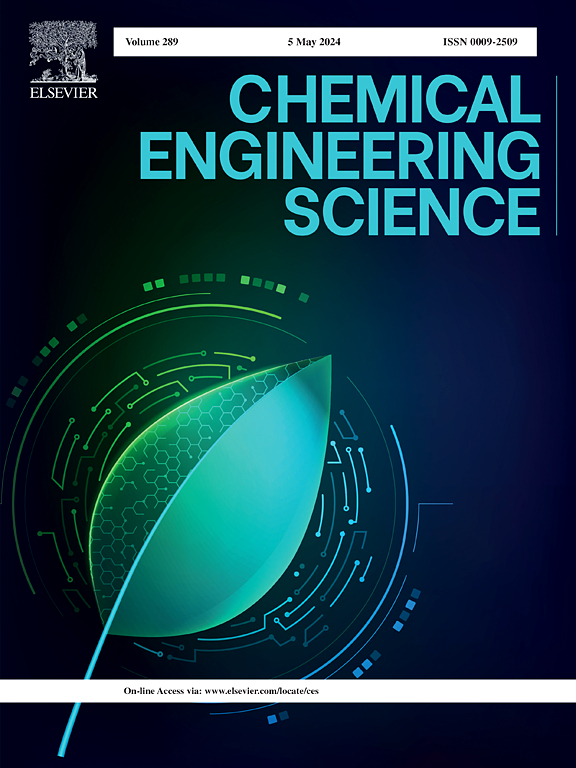液滴撞击非均匀化学图案燃料电池表面的能量演化
IF 4.1
2区 工程技术
Q2 ENGINEERING, CHEMICAL
引用次数: 0
摘要
采用三维非正交晶格玻尔兹曼模型模拟了单个液滴撞击质子交换膜燃料电池底部非均匀可润湿表面的情况。研究了流道中的非均匀表面润湿性差异、冲击韦伯数和中心条纹宽度对扩散阶段能量演化的影响。数值模拟与实验结果之间的定性和定量比较表明,初始铺展阶段的主要能量损失可归因于动量再分布,而粘性耗散则是由边缘的剪应力和涡流造成的。较大的润湿性差异会导致较高的净不平衡杨氏力,从而在润湿性对比线附近产生较强的剪切力和粘性耗散。对于较小的韦伯数字,在早期冲击阶段,动能的主要损失是由动量的重新分配造成的;而在后期的扩散阶段,表面能的增加是动能的主要汇集。在条纹宽度较大时,不平衡的杨氏力会阻碍液滴的扩散,从而导致边缘内的涡旋强度增大。本文章由计算机程序翻译,如有差异,请以英文原文为准。
Energy evolution of a droplet impacting a nonuniform chemically patterned fuel cell surface
A three-dimensional nonorthogonal lattice Boltzmann model is employed to simulate a single droplet impacting a nonuniform wettable surface at the bottom of a proton exchange membrane fuel cell. The effects of nonuniform surface wettability differences in the flow channel, the impact Weber number, and the central stripe width on the energy evolution during the spreading stage are investigated. Qualitative and quantitative comparisons between the numerical simulations and experimental results indicate that the main energy loss during the initial spreading stage is attributable to momentum redistribution, while viscous dissipation is caused by shear stress and vorticity in the rim. A larger wettability difference leads to a higher net unbalanced Young’s force, resulting in stronger shear and viscous dissipation near the wettability contrast line. For smaller Weber numbers, in the early impact stage, the main loss of kinetic energy is caused by the redistribution of momentum; in the later spreading stage, the increase in surface energy is the main sink of kinetic energy. The unbalanced Young’s force hinders the spreading of the droplet at larger stripe widths, leading to a larger vortex intensity within the rim.
求助全文
通过发布文献求助,成功后即可免费获取论文全文。
去求助
来源期刊

Chemical Engineering Science
工程技术-工程:化工
CiteScore
7.50
自引率
8.50%
发文量
1025
审稿时长
50 days
期刊介绍:
Chemical engineering enables the transformation of natural resources and energy into useful products for society. It draws on and applies natural sciences, mathematics and economics, and has developed fundamental engineering science that underpins the discipline.
Chemical Engineering Science (CES) has been publishing papers on the fundamentals of chemical engineering since 1951. CES is the platform where the most significant advances in the discipline have ever since been published. Chemical Engineering Science has accompanied and sustained chemical engineering through its development into the vibrant and broad scientific discipline it is today.
 求助内容:
求助内容: 应助结果提醒方式:
应助结果提醒方式:


